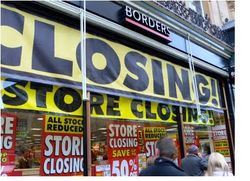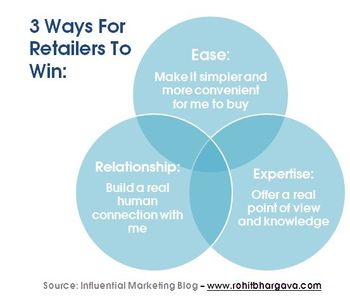
Right now the most viewed and popular blog post on Forbes.com is titled "Why Best Buy Is Going Out Of Business, Gradually." In it, author Larry Downes argues that Best Buy is managing to deliver on none of the things like knowledgeable staff or better showrooms which could make them a destination worth visiting. Instead, he argues, it is a retailer of last resort or a place where you just go to see products that you will eventually buy elsewhere.
Borders Books went into bankruptcy over the past year, and one of the contributing factors was they had more browsers than buyers walking through their stores. This past Black Friday retail season, online sales were a higher overall percentage of consumer spending than ever before – and this has been the trend for the last several years.
The whole situation might remind you of a mismatched relationship, where one person just wants to be friends while the other wants more than that. Those situations never end well. Best Buy wants to marry your wallet, but instead they are getting dumped after a one night stand. It is a sad story, with some fairly clear reasons for why it happens over and over:
- There is better interactive product information online – with all of the online product demos, 3D product shots and direct information from manufacturers – you can often get the best information about particular products and the ability to comparison shop online.
- Online reviews are highly influential – there is a reason that more than 80% of all consumers read online reviews before making purchase decisions. We trust in the opinions of others, even if we don't know them personally – and these online reviews are a huge factor in closing a sale, or losing a customer.
- Retailers can't match lower prices available online – the most logical and common argument is that you can just get any product for cheaper online because the online retailers have much lower overhead to cover because of not having a physical store.
So how can retailers survive this pressure and avoid becoming nothing more than a real life catalogs fueling the sales of their online rivals? It comes down to understanding the three areas where a real life presence still matters, and trying to sit at the intersection of all three. When I think about the real life stores that I have gone to in order to buy a product that I could have purchased online, it was for one of three reasons:
-
Ease – the store was close to me, or the product was large (like a snow blower) and therefore the online channel was too risky or inconvenient and I went to my local store instead.
- Relationship – I had a personal relationship with a person at my local store and therefore had built up trust in them and the experience that they offered me. As a result, I continued to go there despite having other options to purchase online.
- Expertise – In some cases, you just need to speak to someone who knows what they are talking about. Earlier this year when I went to buy a new tent and sleeping bag for a camping trip with my son, I went into the local store to speak to someone who knew our area and could provide useful advice on what to get.
Until retailers are able to find the right way to focus on combining these three together into an experience worth having and sharing, they will continue to lose out to the speedier and always available retailers online.







WE RECENTLY REMOVED COMMENTING - LEARN WHY HERE >